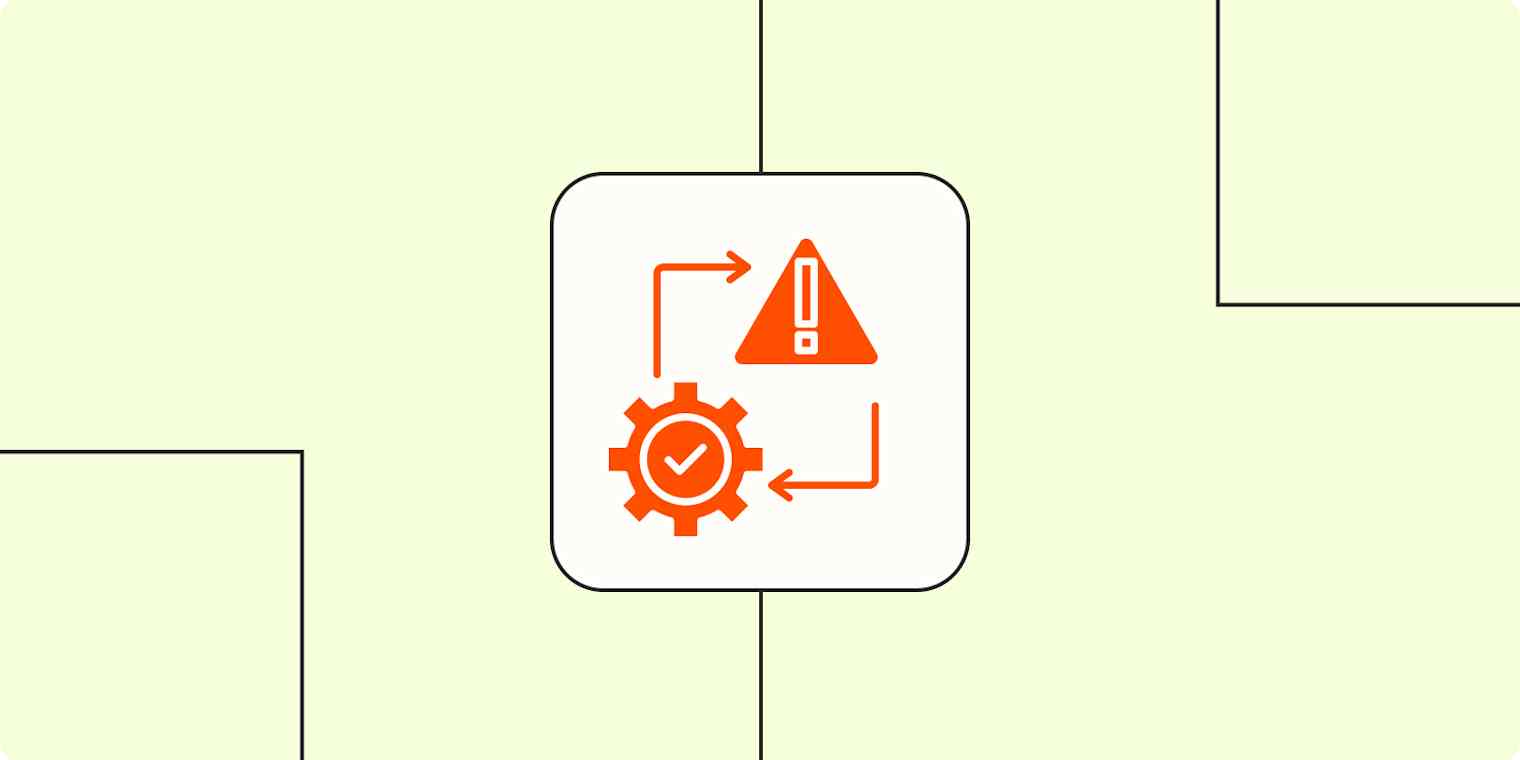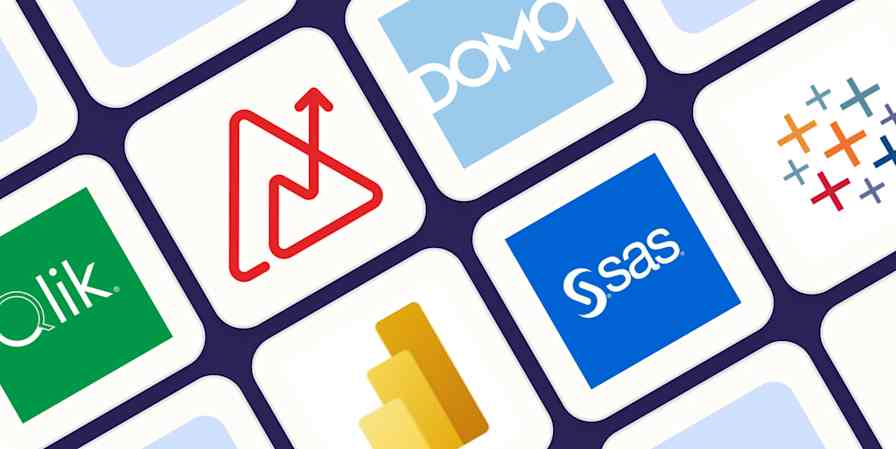Managing unforeseen risks is a paradox: if they're unforeseen, how do you prepare for them without a psychic hotline on corporate retainer?
And with risks today coming in more forms—looking at you, emerging AI security risks—risk management becomes even more complex.
To help you get ahead of risk without getting charged by the minute by your hotline psychic, let's dive into the risk management process—because winging it is rarely a winning strategy.
Table of contents:
What is risk management in business?
Risk management is the process of identifying, assessing, and prioritizing potential risks that could negatively impact a company.
This involves not only recognizing possible threats but also evaluating their likelihood and potential severity. It's about figuring out what those potential risks are before they happen and then developing and implementing strategies to minimize their damage or prevent them entirely.
Effective risk management helps you anticipate likely disruptions and create effective contingency plans to prepare for them, enabling you to be proactive rather than reactive.
Adhiran Thimal, a solutions engineer for application security, put it this way: "Stay proactive, not reactive—waiting until a crisis happens is a recipe for disaster. Regular risk assessments help businesses spot vulnerabilities early."
Common types of risk management (with examples)
Not all risks deserve the same amount of attention. A minor social media snafu is a tad different than a global pandemic shutting down your supply chain. To help you better understand the spectrum of risk, here's what some common types of risks look like for a business.
Strategic
Strategic risks are long-term threats to your company's overall goals and competitive advantage. They often involve major shifts in the market, emerging technologies, or changes in customer preferences.
To manage strategic risks:
Conduct regular market research and competitive analysis. (Market research surveys are a good starting point.)
Develop scenario planning exercises to anticipate potential disruptions and iron out response plans.
Foster a culture of innovation to adapt to changing market conditions.
Establish clear long-term goals and regularly review them for potential threats that account for developing cultural, social, and technological shifts.
Example: Blockbuster's failure to adapt to streaming services allowed Netflix to quickly surpass it in popularity and dominate the home entertainment market.
Regulatory
Regulatory risks stem from changes in laws, regulations, and government policies. These risks can be complex and require specialized expertise to navigate.
To manage regulatory risks:
Stay informed about current and upcoming regulations specific to your industry by monitoring industry reports and legislative changes.
Consult with legal experts, such as attorneys specializing in your industry's regulations, especially if you're in a heavily regulated sector like healthcare.
Implement robust compliance programs and conduct regular audits to ensure ongoing adherence to regulations.
Develop contingency plans in case of regulatory changes, including potential impacts on your operations and necessary adjustments.
Assign clear responsibility for regulatory compliance to specific roles or departments. In larger organizations, this may involve a dedicated compliance officer or department.
Example: The implementation of the General Data Protection Regulation (GDPR) impacted email marketing practices, requiring companies to obtain consent for data collection on European consumers.
Financial
Financial risk isn't just about balancing the books. A seemingly small tremor in the market can trigger an avalanche of consequences that could affect your company's financial stability. For businesses, this typically includes risks related to cash flow, debt, investments, market fluctuations, and credit.
To manage financial risks:
Diversify investments to mitigate the impact of market fluctuations.
Stay ahead of revenue trends by using up-to-date historical sales data to forecast sales—and then automate those forecasts.
Maintain healthy cash flow through applying your forecasting to strategic planning. Secure lines of credit as a precautionary measure to address potential shortfalls or unexpected expenses.
Develop risk appetite guidelines (the amount of risk your organization can handle), align stakeholders with them, and stick to them.
Example: The 2008 housing market crash triggered a global financial crisis and had lasting economic consequences on almost every business in the U.S.
Operational
Operational risks come from within your own company. They're the breakdowns in process, the human errors, the system failures that can bring your operations to a screeching halt. Addressing these risks requires proactive measures.
To manage operational risks:
Implement standardized processes for key operations, such as production, logistics, and customer service, to ensure efficiency.
Invest in employee training and development to minimize human error.
Develop business continuity plans to ensure operations can continue in the event of disruptions.
Regularly review and update business processes to incorporate contingencies into workflows and find areas for improvement. And if you do have an operational slow-down, use that as a case study to update your contingency plans so it doesn't burn you again.
Implement workflow orchestration with a tool like Zapier to reduce human error and ensure consistency.
Example: Scheduling software issues led to Southwest Airlines flight cancellations that disrupted travel plans for thousands of passengers.
Reputational
Reputational risk management is about safeguarding the trust that customers, partners, and investors have placed in your brand. A single unpopular decision can go viral and tank your reputation in minutes (looking at you, Wendy's surge pricing).
Staying ahead of reputational risk requires transparency and a genuine commitment to your customers and stakeholders.
To manage reputational risks:
Build a strong brand reputation through consistent messaging and ethical practices, highlighting them on social media and through press releases.
Monitor social media and reviews to get ahead of potential threats (such as a negative review or comment). To streamline and automate this process, look for social media management tools that include social listening features.
Develop a crisis communication plan that walks through steps to take in the event of negative publicity.
Example: Barbie dolls promoting "Wicked" with QR codes linking to an adult site caused a preventable reputational crisis for Mattel.
Communication
Misunderstandings, unclear messages, and poor information flow can hinder even the best-intentioned plans, leading to confusion and mistrust. These risks arise from a lack of clear and effective communication, both internally and externally.
To manage communication risks:
Establish clear communication channels and protocols. This includes defining preferred communication platforms (e.g., email, team chat, and escalation procedures).
Make sure all stakeholders have access to the information they need by using centralized sources of truth and project management tools. Then be sure to label them with clear, predictable conventions like "Emergency Press Release Guidelines," "Publicity Action Plan," or "Break Glass in Case of PR Emergency Script."
Train employees on effective communication skills as part of your HR processes, keeping training docs and guidelines readily available for review in your HRIS.
Implement feedback mechanisms to identify communication breakdowns.
Example: The COVID-19 pandemic forced a rapid transition to remote work, causing confusion and everyday miscommunications for many companies.
Quality
Customers expect quality products and services. Quality risk arises when these expectations aren't met, leading to issues like defective products, inconsistent performance, or failures that result in customer dissatisfaction and potential brand damage.
To manage quality risks:
Implement quality control processes throughout the product or service lifecycle.
Ask for customer feedback, and use it to improve quality by utilizing multiple feedback channels and offering incentives.
Invest in employee training and development to enhance quality.
Conduct regular quality audits with your product team.
Example: Exploding batteries in Samsung's Galaxy Note 7 caused a massive recall and damaged their reputation for quality and safety.
Technology
While technology drives innovation, it also introduces new vulnerabilities. Cyberattacks, data breaches, and system failures are just the tip of the iceberg. Consider the rapid rise of AI—while it offers immense potential for automation and efficiency, it also brings risks like data privacy violations and other malicious activities.
To manage tech risks:
Implement strong cybersecurity measures to protect against data breaches and cyberattacks.
Develop disaster recovery plans to ensure you're prepared for a system failure.
Stay up-to-date with the latest technology trends and the security risks du jour, and make it a recurring task for your IT team to assess potential risks.
Conduct regular IT audits to identify vulnerabilities and ensure compliance with security standards.
Consider third-party security audits to ensure you haven't missed any potential issues.
Example: LastPass suffered from two back-to-back data breaches, the first compromising source code, which led to a second, more severe breach that exposed customer vault data.
Performance
Consistent failure to meet business targets constitutes a significant performance risk. This can stem from a lack of innovation, poor strategic planning, or just plain bad luck.
To manage organizational performance risks:
Establish clear, measurable performance goals and metrics aligned with business objectives. Implement frameworks like OKRs and KPIs to track progress and ensure accountability.
Monitor performance regularly and identify areas for improvement by keeping goals actionable and measurable.
Give employees the resources and support they need to succeed by regularly checking in with them during standups, recurring one-on-ones, or ongoing internal surveys.
Conduct regular performance reviews fosters an open, collaborative, transparent environment. What you want is honest feedback about what your teams need to help them do what they do, not "Everything's-great-please-don't-fire-me" canned responses.
Example: BlackBerry's inability to update its product offerings in response to evolving customer needs led to declining sales and a loss of market share.
How to effectively manage risk in business
Managing risk isn't about avoiding every possible problem (if that was possible, we'd be writing that article instead)—it's about preparing for the inevitable bumps, potholes, and detours in the road. Here are some practical steps to take to minimize the impact of potential risks.
Step 1: Anticipate the risk
Assess business operations, trends, and external factors to identify risks.
Thorough assessment: Conduct a comprehensive review of your business operations, industry trends, and external factors using tools like process mapping software.
Brainstorming sessions: Host regular team brainstorming sessions using virtual whiteboard tools.
Industry research: Dive deep into industry reports, competitor analyses, and market trends using market research platforms.
Internal data analysis: Analyze internal data using business intelligence (BI) tools and dashboards.
Structured analysis: Employ tools like SWOT analyses or risk registers, and consider using online survey tools to gather internal and external feedback for risk identification.
Step 2: Size up the threat
Once you've identified possible risks, evaluate their likelihood, impact, and task priority.
A risk matrix can help you visualize potential risks. This involves plotting risks on a chart with "likelihood" on one axis and "impact" on the other. Here's how to create one:
1. Define your axes:
Likelihood: Use categories like "Rare," "Unlikely," "Possible," "Likely," and "Almost certain."
Impact: Use categories like "Insignificant," "Minor," "Moderate," "Major," and "Catastrophic."
2. Create the matrix:
Draw a grid with likelihood on the vertical axis and impact on the horizontal axis.
Divide each axis into your defined categories.
3. Plot your risks:
For each identified risk, determine its likelihood and impact.
Plot the risk in the corresponding cell on the matrix.
4. Prioritize risks:
Risks in the upper-right corner (high likelihood, high impact) are your top priorities.
Risks in the lower-left corner (low likelihood, low impact) are lower priorities.
Example risk matrix
Likelihood | Insignificant | Minor | Moderate | Major | Catastrophic |
|---|---|---|---|---|---|
Almost certain | Minor process error | Customer complaint | System downtime (short) | Loss of key client | Major system failure |
Likely | Trivial data entry error | Project delay | Financial loss (small) | Major reputation damage | Legal action |
Possible | Minor supply delay | Minor reputation damage | Financial loss (moderate) | Data breach (small) | Complete market disruption |
Unlikely | Minor communication gap | Employee injury | Financial loss (large) | Data breach (large) | Business closure |
Rare | Equipment malfunction | Minor regulatory fine | Significant regulatory fine | Major product recall | Natural disaster |
Step 3: Establish your priorities
Focus your resources on the most critical threats—those that pose the greatest danger to your business. Rank risks based on your analysis or matrix from Step 2. Which risks have the highest probability and the biggest potential impact? Those are your top priorities.
Step 4: Develop strategies
Develop strategies to mitigate the impact of top-priority risks. This might involve implementing new procedures, investing in technology, or even transferring the risk (such as to an insurance company). Be specific, and create action plans with assigned responsibilities and deadlines.
Step 5: Document everything
Create a risk management plan that outlines the identified risks, their potential impact, the mitigation strategies, and assigned responsibilities. This document should be regularly reviewed and updated.
For specific high-risk areas, like those a PR team might handle, develop crisis communication plans and response protocols. This ensures everyone knows what to do if a risk becomes a reality.
Step 6: Regularly monitor risks
Risk management is an ongoing process. Regularly monitor risks, track the effectiveness of your mitigation strategies, and be prepared to adapt your plans. New risks can emerge, and existing risks can change over time. It's not a "set it and forget it" kind of thing.
Benefits of an effective risk management strategy
An effective risk management strategy isn't just about damage control—it's about taking a proactive approach. Here are some of the benefits of properly managing risks:
Proactive problem-solving: Instead of constantly reacting to crises, a solid risk management strategy allows you to anticipate and address risks quickly. This saves time, money, and stress (less firefighting, more strategizing).
Improved decision-making: When you understand potential risks and have data to lean on, you make more informed decisions.
Enhanced efficiency: Risk management streamlines operations and time management, preventing costly mistakes. Fewer surprises mean smoother processes and better resource allocation.
Increased communication and visibility: A well-defined process encourages communication and greater visibility into potential problems. Everyone's on the same page, and potential issues are flagged early.
Better crisis preparedness: Even with the best planning, some crises are unavoidable. A strong risk management strategy prepares you to respond effectively, minimizing the impact for faster recovery.
Streamline risk management workflows with Zapier
Proactive risk management is the best way to avoid ending up in the fetal position when an unexpected crisis inevitably hits. And while you can't predict the unpredictable, automation can help you stay ahead of the potential impacts.
Zapier's no-code integrations allow you to build automated workflows, connecting thousands of apps to streamline risk identification, communication, and reporting. Trigger notifications in your chat platform of choice, update documentation in your data management solutions, and coordinate responses cross-functionally in connected project management software. Start building your automated risk management system before you actually need it.
Related reading:








